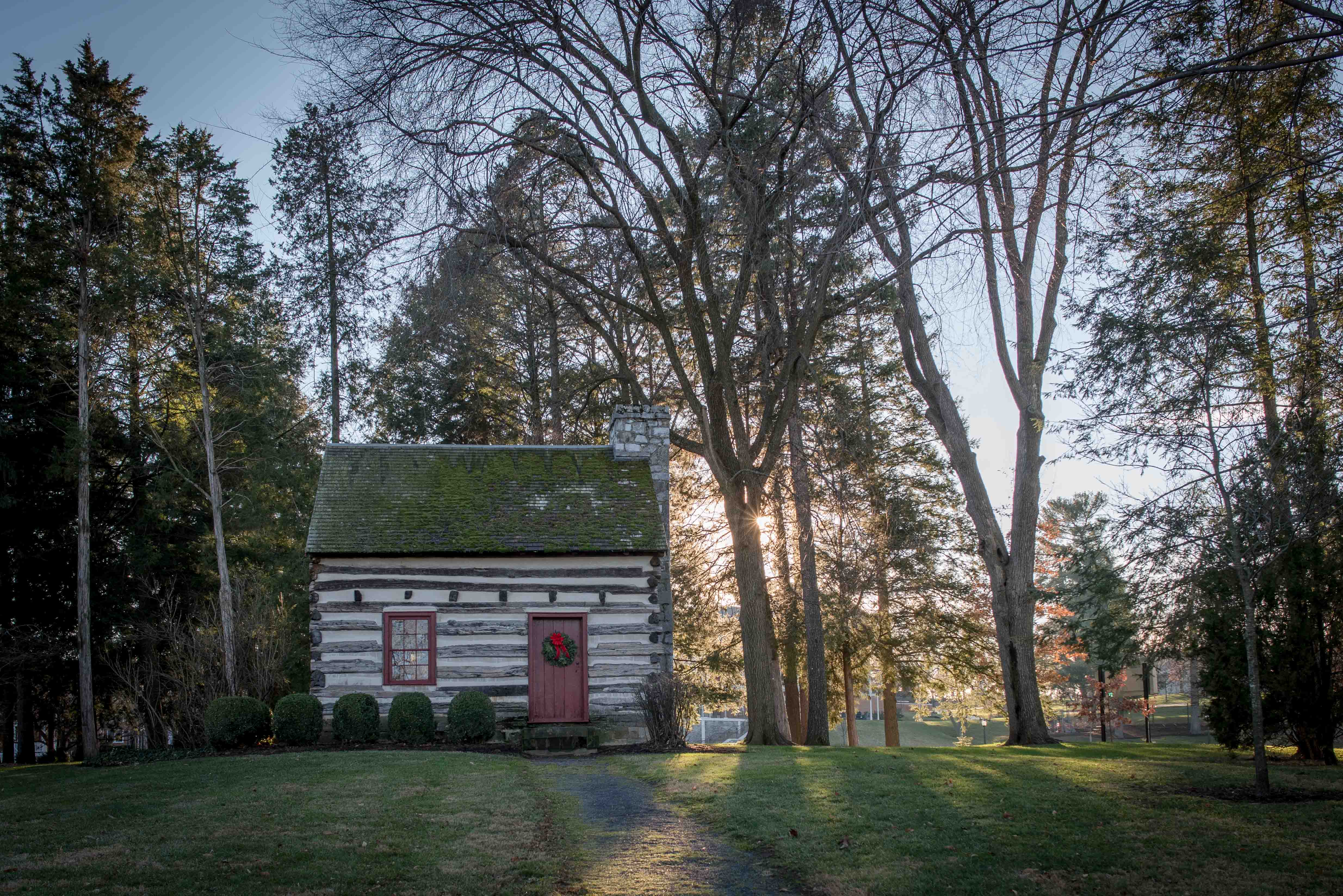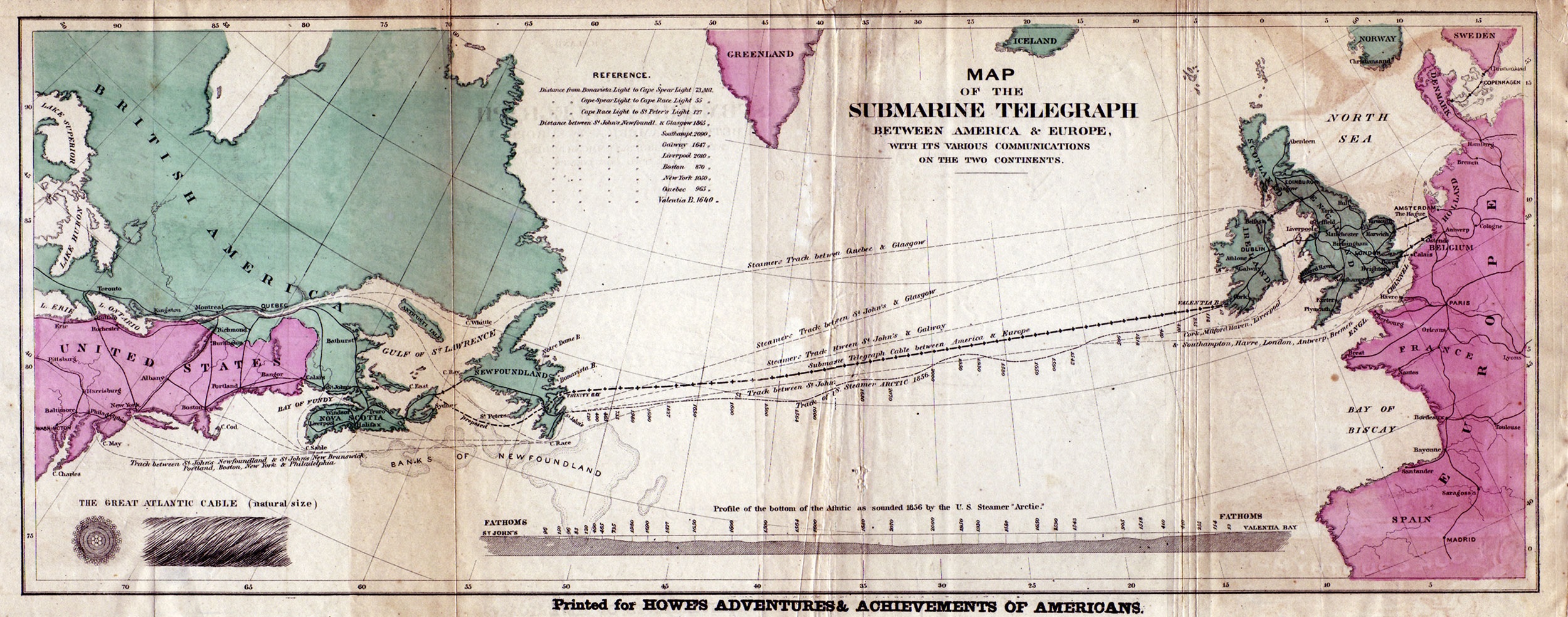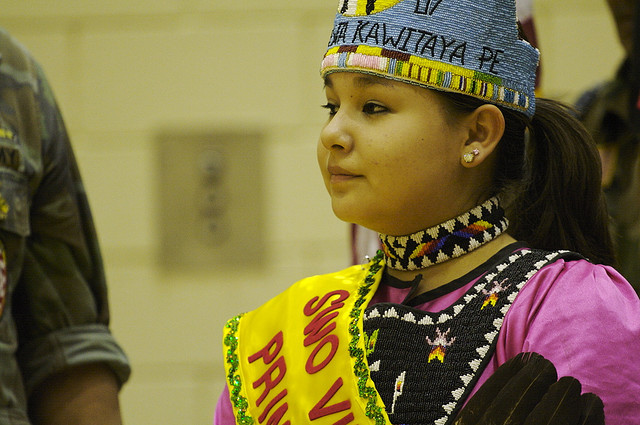|
Treaty With The Sioux, 1858
The Treaty with the Sioux, 1858 was signed on June 19, 1858, between the United States government and representatives of the Sisseton and Wahpeton bands of Dakota. This treaty defined the boundaries of the Lower Sioux reservation as that portion of the strip defined in the Treaty of Traverse des Sioux lying south of the Minnesota River. Notably, this excluded the northern half of the land previously allotted to the Indians. Additional provisions for surveying the land, allotting land to individual families, law enforcement, compensation payments, and economic development were also included. Background The treaties of Traverse des Sioux (between the United States the Sisseton and Wahpeton bands of Dakota) and Mendota (between the United States and the Mdewakanton and Wahpekute bands), as signed by their representatives, committed the Eastern Dakota to live on a 20-mile (32 km) wide reservation centered on a 150 mile (240 km) stretch of the upper Minnesota River. D ... [...More Info...] [...Related Items...] OR: [Wikipedia] [Google] [Baidu] |
Treaty Of Traverse Des Sioux
The Treaty of Traverse des Sioux () was signed on July 23, 1851, at Traverse des Sioux in Minnesota Territory between the United States government and the Dakota people, Upper Dakota Sioux bands. In this land cession treaty, the Sisseton and Wahpeton Dakota bands sold 21 million acres of land in present-day Iowa, Minnesota and South Dakota to the U.S. for $1,665,000. The treaty was instigated by Alexander Ramsey, the first governor of Minnesota Territory, and Luke Lea (Commissioner of Indian Affairs), Luke Lea, Commissioner of Indian Affairs in Washington, D.C. They were assisted by territorial Congressional delegate Henry Hastings Sibley and the traders who sought compensation for business losses which appeared on their books as "Indian debts." Governor Ramsey and Commissioner Lea justified the Treaty of Traverse des Sioux and the Treaty of Mendota to the United States Congress on the basis of an "overwhelming tide of migration...increasing and irresistible in its westward progre ... [...More Info...] [...Related Items...] OR: [Wikipedia] [Google] [Baidu] |
Treaty Of Mendota
The Treaty of Mendota () was signed in Mendota, Minnesota, on August 5, 1851, between the United States federal government and the Mdewakanton and Wahpekute Dakota people of Minnesota. The agreement was signed near Pilot Knob on the south bank of the Minnesota River and within sight of Fort Snelling. The treaty stipulated that the Mdewakanton and Wahpekute bands were to receive US$1,410,000 in return for relocating to the Lower Sioux Agency on the Minnesota River near present-day Morton, Minnesota along with giving up their rights to a significant portion of southern Minnesota. With the signing of the Treaty of Mendota along with the earlier Treaty of Traverse des Sioux (), most of southern Minnesota became open to white settlement.Map of ceded territory can be seen through the Library of Congress here in orange Treaty The text of the treaty is as follows: ARTICLE 1. The peace and friendship existing between the United States and the Med-ay-wa-kan-toan and Wah-pay-koo-tay ... [...More Info...] [...Related Items...] OR: [Wikipedia] [Google] [Baidu] |
Indian Reservation
An American Indian reservation is an area of land land tenure, held and governed by a List of federally recognized tribes in the contiguous United States#Description, U.S. federal government-recognized Native American tribal nation, whose government is Tribal sovereignty in the United States, autonomous, subject to regulations passed by the United States Congress and administered by the United States Bureau of Indian Affairs, and not to the state governments of the United States, U.S. state government in which it is located. Some of the country's 574 List of Native American Tribal Entities, federally recognized tribes govern more than one of the 326 List of Indian reservations in the United States, Indian reservations in the United States, while some share reservations, and others have no reservation at all. Historical piecemeal land allocations under the Dawes Act facilitated sales to non–Native Americans, resulting in some reservations becoming severely fragmented, with pie ... [...More Info...] [...Related Items...] OR: [Wikipedia] [Google] [Baidu] |
Minnesota River
The Minnesota River () is a tributary of the Mississippi River, approximately 332 miles (534 km) long, in the U.S. state of Minnesota. It drains a watershed of in Minnesota and about in South Dakota and Iowa. It rises in southwestern Minnesota, in Big Stone Lake on the Minnesota–South Dakota border just south of the Laurentian Divide at the Traverse Gap portage. It flows southeast to Mankato, then turns northeast. It joins the Mississippi at Mendota south of the Twin Cities of Minneapolis and St. Paul, near the historic Fort Snelling. The valley is one of several distinct regions of Minnesota. The name Minnesota comes from the Dakota language phrase, "Mnisota Makoce" which is translated to "land where the waters reflect the sky", as a reference to the many lakes in Minnesota rather than the cloudiness of the actual river. At times, the native variant form "Minisota River" is used. For over a century prior to the organization of the Minnesota Territory in 184 ... [...More Info...] [...Related Items...] OR: [Wikipedia] [Google] [Baidu] |
Little Crow
Little Crow III ( Dakota: ''Thaóyate Dúta''; 1810 – July 3, 1863) was a Wahpekute Dakota chief who led a faction of the Dakota in a five-week war against the United States in 1862. In 1846, after surviving a violent leadership contest with his half-brothers, Taoyateduta became chief of his band and assumed the name Little Crow. He played a pivotal role in signing the 1851 Treaty of Mendota which ceded most of their lands in present-day Minnesota and Iowa to the United States. In 1858, Little Crow led a delegation of Dakota leaders to Washington, D.C., where they were pressured by the U.S. government to give up their remaining holdings north of the upper Minnesota River. Faced with anger and mistrust at home, Little Crow lost an election for tribal spokesman in 1862, after which he tried to change his traditionalist ways. That summer, severe economic hardship, starvation, and tensions with government Indian agents, fur traders, and a fast-growing population of European ... [...More Info...] [...Related Items...] OR: [Wikipedia] [Google] [Baidu] |
James Buchanan
James Buchanan Jr. ( ; April 23, 1791June 1, 1868) was the 15th president of the United States, serving from 1857 to 1861. He also served as the United States Secretary of State, secretary of state from 1845 to 1849 and represented Pennsylvania in both houses of the U.S. Congress. Buchanan was an advocate for states' rights, particularly regarding Slavery in the United States, slavery, and minimized the role of the Federal government of the United States, federal government preceding the American Civil War. Buchanan was a lawyer in Pennsylvania and won his first election to the state's Pennsylvania House of Representatives, House of Representatives as a Federalist Party, Federalist. He was elected to the U.S. House of Representatives in 1820 and retained that post for five terms, aligning with Andrew Jackson's Democratic Party (United States), Democratic Party. Buchanan served as Jackson's List of ambassadors of the United States to Russia, minister to Russia in 1832. He won t ... [...More Info...] [...Related Items...] OR: [Wikipedia] [Google] [Baidu] |
Yankton Treaty
The Yankton Treaty was a treaty signed in 1858 between the United States Government and the Yankton Sioux Tribe (Western Dakota), that ceded most of eastern South Dakota (11 million acres) to the U.S. Government. The treaty was signed in April 1858, and ratified by the United States Congress on February 16, 1859. Background The 1851 Treaty of Traverse des Sioux, which ceded vast tracts of Sioux land to the U.S. government, was signed only by representatives of the Sisseton and Mdewakanton bands. The Yankton and Yanktonai tribes were not consulted. Governor Alexander Ramsey, Ramsey used the Joseph Nicollet, Nicollet map of the Upper Mississippi River basin from 1840 to draw the boundaries. He saw the Big Sioux River as a geographic feature separating the Sisseton and Yankton and Yanktonai tribes.Wanata, Chief Waanata 1 of the Yanktonai claimed from Granite Falls, Minnesota, Granite Falls to the Missouri River. Chief Struck-by-the-Ree of the Yankton claimed the land int ... [...More Info...] [...Related Items...] OR: [Wikipedia] [Google] [Baidu] |
Dakota War Of 1862
The Dakota War of 1862, also known as the Sioux Uprising, the Dakota Uprising, the Sioux Outbreak of 1862, the Dakota Conflict, or Little Crow's War, was an armed conflict between the United States and several eastern bands of Dakota people, Dakota collectively known as the Santee Sioux. It began on August 18, 1862, when the Dakota, who were facing starvation and Forced displacement, displacement, attacked the Lower Sioux Agency and white settlements along the Minnesota River valley in southwest Minnesota. The war lasted for five weeks and resulted in the deaths of hundreds of settlers and the displacement of thousands more. In the aftermath, the Dakota people were exiled from their homelands, forcibly sent to reservations in the Dakotas and Nebraska, and the State of Minnesota confiscated and sold all their remaining land in the state. 1862 Mankato mass execution, Thirty-eight Dakota men were subsequently hanged for crimes committed during the conflict in the largest mass execut ... [...More Info...] [...Related Items...] OR: [Wikipedia] [Google] [Baidu] |
United States And Native American Treaties
United may refer to: Places * United, Pennsylvania, an unincorporated community * United, West Virginia, an unincorporated community Arts and entertainment Films * ''United'' (2003 film), a Norwegian film * ''United'' (2011 film), a BBC Two film * ''The United'' (film), an unreleased Arabic-language film Literature * ''United!'' (novel), a 1973 children's novel by Michael Hardcastle Music * United (band), Japanese thrash metal band formed in 1981 Albums * ''United'' (Commodores album), 1986 * ''United'' (Dream Evil album), 2006 * ''United'' (Marvin Gaye and Tammi Terrell album), 1967 * ''United'' (Marian Gold album), 1996 * ''United'' (Phoenix album), 2000 * ''United'' (Woody Shaw album), 1981 Songs * "United" (Judas Priest song), 1980 * "United" (Prince Ital Joe and Marky Mark song), 1994 * "United" (Robbie Williams song), 2000 * "United", a song by Danish duo Nik & Jay featuring Lisa Rowe * "United (Who We Are)", a song by XO-IQ, featured in the television ser ... [...More Info...] [...Related Items...] OR: [Wikipedia] [Google] [Baidu] |
1858 Treaties
Events January–March * January 9 ** Revolt of Rajab Ali: British forces finally defeat Rajab Ali Khan of Chittagong. ** Anson Jones, the last president of the Republic of Texas, commits suicide. * January 14 – Orsini affair: Piedmontese revolutionary Felice Orsini and his accomplices fail to assassinate Napoleon III in Paris, but their bombs kill eight and wound 142 people. Because of the involvement of French émigrés living in Britain, there is a brief anti-British feeling in France, but the emperor refuses to support it. * January 25 – The '' Wedding March'' by Felix Mendelssohn becomes a popular wedding recessional, after it is played on this day at the marriage of Queen Victoria's daughter Victoria, Princess Royal, to Prince Friedrich of Prussia in St James's Palace, London. * January **Benito Juárez becomes the Liberal President of Mexico and its first indigenous president. At the same time, the conservatives installed Félix María Zuloaga as a riv ... [...More Info...] [...Related Items...] OR: [Wikipedia] [Google] [Baidu] |
Sisseton Wahpeton Oyate
The Sisseton Wahpeton Oyate of the Lake Traverse Reservation (), formerly Sisseton-Wahpeton Sioux Tribe/Dakota Nation, is a federally recognized tribe comprising two bands and two subdivisions of the ''Isanti'' or Santee Dakota people. They are on the Lake Traverse Reservation in northeast South Dakota. Lake Traverse Reservation The Lake Traverse Reservation and its boundaries were established by the Lake Traverse Treaty of 1867. From 1884 until the 1913, the tribal government was based upon the concept of the Soldier's Lodge. Due to external pressures from federal Indian agents and religious missionaries, as well as internal turmoil, in 1913 the tribe created an advisory committee. It served as the basis of government until 1946. In 1934 the federal government urged the tribe to adopt the provisions of the Wheeler-Howard Act, also known as the Indian Reorganization Act. By 1946 the tribe had reorganized, establishing the current system of bylaws and elected tribal governme ... [...More Info...] [...Related Items...] OR: [Wikipedia] [Google] [Baidu] |
Sioux
The Sioux or Oceti Sakowin ( ; Dakota/ Lakota: ) are groups of Native American tribes and First Nations people from the Great Plains of North America. The Sioux have two major linguistic divisions: the Dakota and Lakota peoples (translation: referring to the alliances between the bands). Collectively, they are the , or . The term ''Sioux'', an exonym from a French transcription () of the Ojibwe term , can refer to any ethnic group within the Great Sioux Nation or to any of the nation's many language dialects. Before the 17th century, the Santee Dakota (: , also known as the Eastern Dakota) lived around Lake Superior with territories in present-day northern Minnesota and Wisconsin. They gathered wild rice, hunted woodland animals, and used canoes to fish. Wars with the Ojibwe throughout the 18th century pushed the Dakota west into southern Minnesota, where the Western Dakota (Yankton, Yanktonai) and Lakota (Teton) lived. In the 19th century, the Dakota signed land cess ... [...More Info...] [...Related Items...] OR: [Wikipedia] [Google] [Baidu] |







